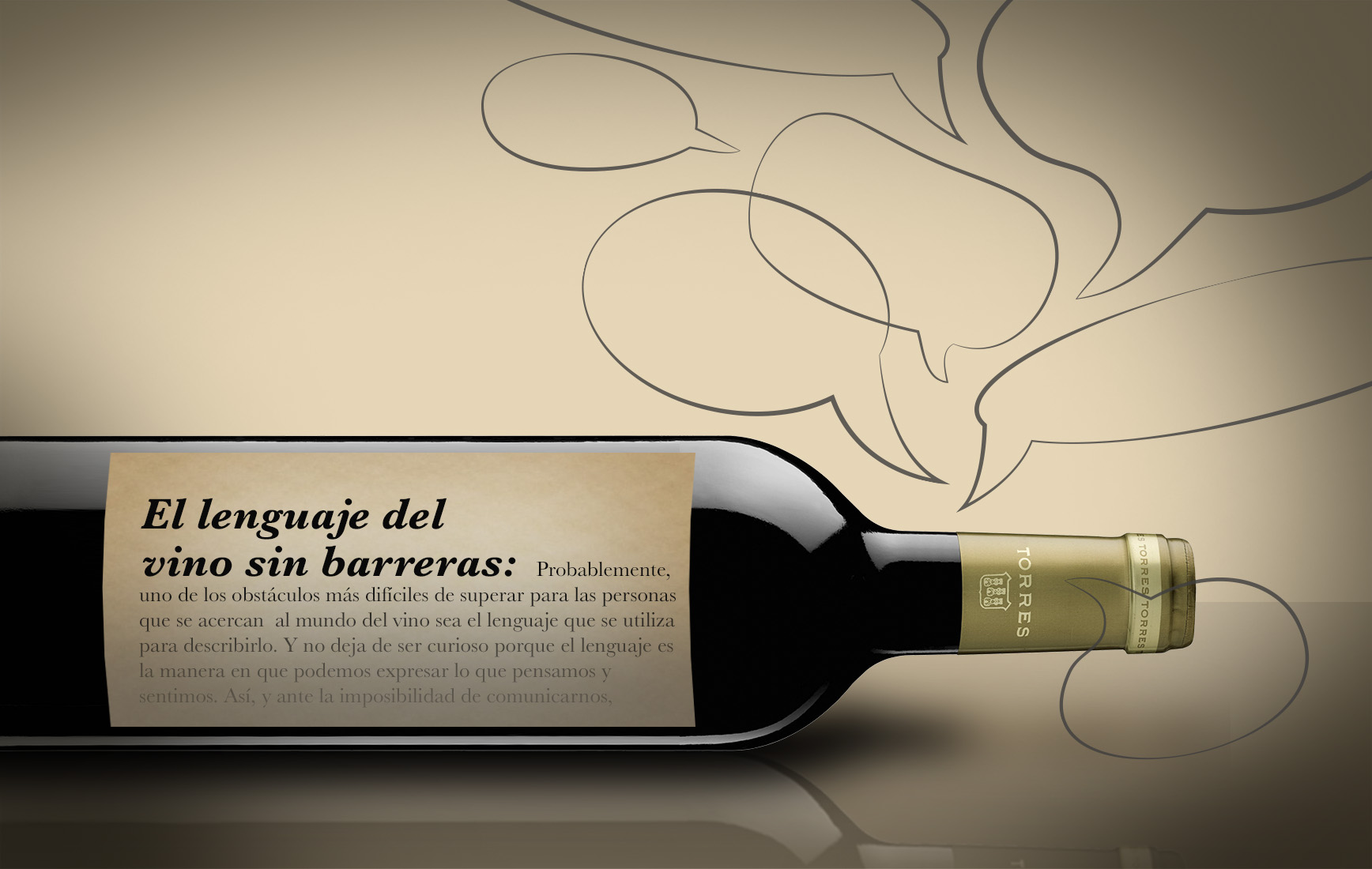Wine Language Made Accessible

When people first start to explore the world of wine, one of the biggest hurdles to overcome is the language used in describing it. This is odd, of course, because language is the way in which we can express what we think and feel. And so, facing the impossibility of communicating, people feel frustrated or simply disengage. An outcome as unpleasant as it is unnecessary.
Language should not be an obstacle or barrier between the expert and the consumer. In fact, it should be exactly the opposite. We should turn these linguistic hurdles into a simple exercise rooted in a love for learning. Not unlike immersing ourselves in a new language for the mere pleasure of communicating in it, knowing all the while that we'll never lose our accent.
Every industry has its own terminology. Just like every person has his or her own style and way of speaking and writing. I often don't understand IT professionals when they try to explain how a specific computer program works or mechanics when they check my car's engine, not to mention doctors. As in all things, there are professionals whose approach is educational and engaging, allowing us to make sense of what seems almost impossible to grasp. Think back to your math or philosophy teacher in school: either they turned the subject into an unbearable, semester-long chore or they got us incredibly excited about it. The same is true for the way people use the language of wine.
There are plenty of dictionaries where you can look up technical terminology so lets move on to something practical. Nothing provides a better example than two texts describing two different types of wine.
"Brilliant straw yellow with greenish highlights. Fresh and aromatic. Notes of white, exotic and citrus (grapefruit) fruit along with fresh herbaceous hints. Flavorful, lively and big on the palate. Fruit sensations reminiscent of green apple and apricot. Long, satisfying and slightly bitter finish." This could be the description of a young white wine of the Albariño variety. The way it is written is a bit intimidating. It might make us feel like moving on and simply drinking the wine without complicating matters further. However, each word actually expresses a sensation that we perceive in a very specific order. First, we describe the color, followed by the impressions our nose perceives, using a specific qualifier. We conclude with the sensations the wine leaves in our mouth. We can express almost the same idea by saying that it is an aromatic wine with a scent that reminds us of apples, very fresh, crisp and full of flavor. In addition, I'm sure that everyone is thinking about whether they like the wine or not. I'm also sure that after trying five Albariños, we intuitively know which one we like better than the others and why.
Lets look at another example describing what could be an aged Tempranillo red.
"Deep dark cherry red with violet edge. Complex, elegant and intense. Aromas of ripe fruit, plums and blackberries, floral notes (violets), cinnamon and clove, minerals and dry leaves. Balanced and luscious on the palate. Ripe fruit, balsamic notes, licorice, incense...A lingering, aromatic aftertaste." We could convey almost the same idea by saying that the wine smells of dark fruit and spices, is potent on the palate, and we still notice its presence after drinking it.
The language of aromas tends to be complicated. We might pick up on a smell, but can't really say what it is. Or perhaps we recognize it, but cannot put a name to what we perceive. Our sense of smell is closely related to our personal experiences, tastes and level of practice. One important thing to know is that we will almost always find fruit and flowers in wine. And barrel-aged wines will contain toasted and spicy notes imparted by the wood. If this seems complicated, the best approach is to gradually develop our own language based on the everyday odors we know and recognize.
Generally, the language used in describing wine sensations in the mouth is easier. We relate concepts like acidic, sweet, savory, bitter or textural impressions to our regular habit of eating. But, what are we supposed to understand by body, mouth-filling (big) or length, three very common words? The body of a wine refers to the sensation of density. You might find this easier if you think of describing a wine as light, viscous, smooth or creamy. Certain wines give the textural sensation of literally filling your mouth. This is when we would describe a wine as mouth-filling or big. And if you still note echoes of the wine after drinking it, you would say it has length or it is long in the mouth. Acidity is yet another magic word. It doesn't necessarily mean that the wine is acidic. This is one of the most important parameters in a wine, because it produces sensations described as "lively", "fresh", "nervy" or "flat". In other words, a wine with a lot of spark or that is crisp, juicy or dull. On occasion you have probably wondered what it means when a wine is balanced or round. This refers to harmony, to the fact that no individual element—the alcohol, the rough, dry feeling on your tongue or too much acidity—predominates, but that we perceive them as a balanced whole.
The characteristics of wine vary greatly and every evaluation will be subjective to a certain extent. Therefore, what matters most is making the language easy and accessible, to have fun with the terms, approach wine without preconceptions and—above all else—enjoy it.
Cristina Alcalá
